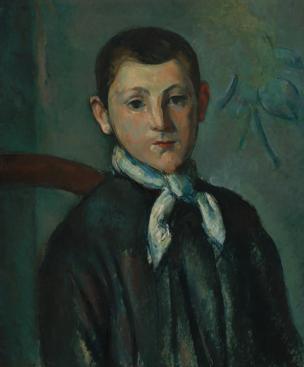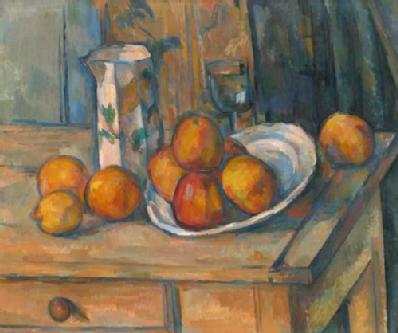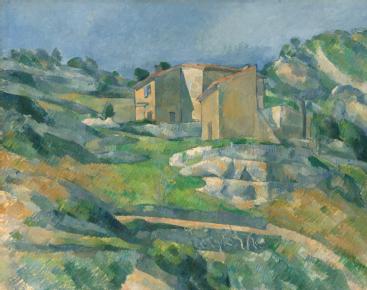Professor Paul Smith, Leverhulme Major Research Fellowship
Unfolding Vision: Cezanne’s ‘Personal Way of Seeing’
In Paul Cezanne’s portrait of Louise Guillaume (1879-90), the floral pattern in the wallpaper behind the sitter seems to be disappearing.
Objects at the edges of our attention gradually fade away when we look fixedly elsewhere.
French artist and post-impressionist painter Paul Cezanne cultivated a ‘personal way of seeing’, which involved staring at ‘one point’ with a ‘static eye’ for up to twenty minutes.
It would appear that he succeeded in showing – in a painting which must remain static – how we experience vision as it unfolds through time.
Through his Fellowship, Professor Paul Smith from History of Art will use psychology and neuroscience to show how this and other ‘distortions’ in Cezanne’s work are the result of the same way of seeing.
His Fellowship draws on research into holistic face perception, and autism, to explain how prolonged fixation made the faces in his portraits look mask-like or devoid of character.

Paul Cezanne. Louis Guillaume, 1879-90. Oil on canvas. Washington National Gallery of Art, Chester Dale Collection.

Paul Cezanne. Still Life with Milk Jug and Fruit, c.1900. Oil on canvas. Washington National Gallery of Art, Gift of the Averell Harriman Foundation in memory of Marie Harriman.

Paul Cezanne. Houses in Provence: The Riaux Valley near L'Estaque, c.1883. Oil on canvas. Washington National Gallery of Art, Collection of Mr & Mrs Paul Mellon.
How perception can shape a painting
Professor Smith examines how staring can account for the bulging, discontinuous horizontals, and swollen ellipses of objects in works such as Cezanne's Still Life with Milk Jug and Fruit (c.1900).
He employs ideas about constancy to investigate how looking at landscapes such as Houses in Provence: The Riaux Valley near L'Estaque (c.1883) for several hours a day can elicit what Cezanne called their ‘weightiness.’
It is apparent, even to an amateur, that recent advances in our understanding of the visual brain make this an opportune moment to look to psychology for an understanding of how perception can shape a painting.
In addition, psychology sympathetically restates what philosophers such as Maurice Merleau-Ponty have said about Cezanne in terms which are testable.
So, far from negotiating any divisions between the arts and the sciences, Professor Paul Smith's Fellowship will in fact aim to demonstrate that these fields are complementary, and even continuous.
Read more about Professor Smith's Fellowship
